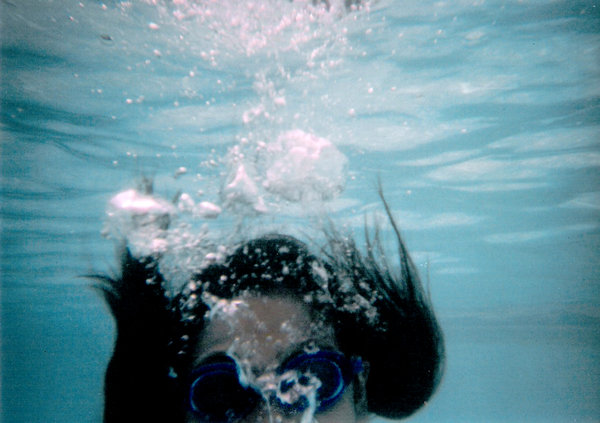 by neener-nina via DeviantArt
by neener-nina via DeviantArtThe risk of drowning increases in summer, as does the risk of "dry drowning" or "secondary drowning". Dry drowning is a rare event, but it does happen and knowing the signs could potentially save a life.
What is Dry Drowning?
This rare event accounts for 1%-2% of all drownings. Dry drowning occurs when a small amount of water is inhaled during a struggle or rough play. The muscles lining the airways become irritated and spasm. The lungs then produce fluid, which builds up and causes pulmonary edema. The person is then at risk for drowning in their own fluids.
What are the Signs of Dry Drowning?
The entire process can occur 1 to 24 hours after the water first entered the lungs. A person can be out of the water for hours and functioning normally before the signs of dry drowning present themselves. A dry drowning victim can exhibit the following:
- Trouble breathing
- Chest pain
- Coughing
- Sudden behavioral changes
- Extreme fatigue or lethargy
- Fever
- Sweaty or pale blue/gray skin
It can be especially difficult to spot these signs in young children who may simply appear tired after a day in the pool. However, it is very important to keep an eye on any child who had trouble while in the water or who engaged in particularly rough play.
How is Dry Drowning Treated?
At the first sign of dry drowning, take the affected person to the hospital immediately. Doctors can administer oxygen or use diuretics and positive air pressure to remove fluid from the lungs.
Can Dry Drowning be Prevented?
To a certain extent, yes, dry drowning can be prevented. Keeping a close eye on children and preventing an event that causes them to inhale water is the surest way to avoid dry drowning. Be aware, however, that it only takes a second for the aspiration of liquid, and it doesn't even have to happen while in a swimming pool.
While you may not be able to control the conditions that cause dry drowning, you can certainly prevent death from dry drowning by monitoring the person's breathing and behavior. At the first sign of any of the symptoms listed above, go immediately to a hospital.













